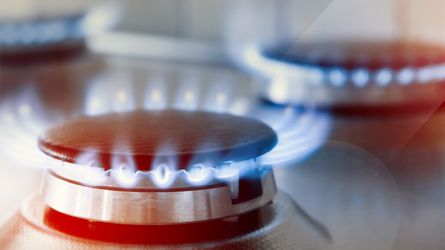
Gas Odorization
LEWA odorizes gas: Custom units or tried-and-tested systems – we supply exactly what you need!
Read more
Maximum performance with LEWA odorizing systems. 1,000,000 standard cubic meters per hour.
Network operators transport natural gas through gigantic gas transport networks to power plants, industrial operations and, using local networks, to private households throughout Germany. At distinct hubs, large quantities of gas arrive that are subsequently funneled into different sub-networks and various directions. A gas pressure controller and measuring system ensures compliance with mandatory safety regulations and processing without a hitch. It also regulates the inlet pressure to the required outlet pressure rating. At this stage, the gas is usually odorized—a measure intended to make the unintentional escape of gas recognizable early on for everybody. Thus, safety risks and accidents can be prevented, and gas leaks can be detected in a timely manner.
At this point, LEWA comes into play. For decades, LEWA has been building systems for gas odorization and has acquired unparalleled expertise regarding processes and applications.
In 2015, a major natural gas network operator enlisted this expertise. Using an odorizing system of the OD 4200 type specifically manufactured for this customer, it was possible to develop a solution that takes the on-site conditions into account and matches the customer's difficult process requirements optimally. Tetrahydrothiophene (THT), an organic sulfur compound with an intense odor, is used as the odorant. Using the OD 4200, THT odorizes quantities of up to one million standard cubic meters per hour.
Not only is the OD 4200 the largest odorizing system ever produced by LEWA, but it is also currently the largest of its kind in Germany.
The OD 4200 mega-odorizer. One customized solution, many benefits.
The following properties make the OD 4200 an optimal solution for the application at the hub of the gas network:
Why is natural gas odorized? What requirements does the odorant have to meet?
Natural gas odorization is an important safety measure, not just for gas purchasers and customers. Formerly used city or cokery gases had a strong intrinsic odor and rarely required odorization. Meanwhile, the commonly used natural gas is cleaned and almost odorless. In order to be able to immediately detect leakage in the gas network, the natural gas odorization is mandatory as a safety measure. The gases added during the odorization generate specific warning odors. This prevents the formation of explosive gas/air mixtures, which are highly dangerous.
The odorants used in the odorization of natural gas must fulfill special safety requirements. Their odor must be perceptible even at a high dilution, and unmistakably induce the association with gas leakage. The odorant must therefore smell unpleasant and distinctive.
In Germany, volatile organic sulfur compounds are frequently used as odorant. Their typical savor is evocative of the smell of rotten eggs. Often the odorless saturated sulfur heterocycle tetrahydrothiophene (THT) is used in concentrations of 12 to 25 mg/m³. Frequently, also mercaptan mixtures are in use.
There are also odorants free of sulfur. Unlike the odorization with the sulfur-containing substances THT or Mercaptan, sulfur-free odorants have the advantage that no additional sulfur oxides are formed during the combustion of natural gas. Examples of sulfur-free odorants are mixtures of ethyl acrylate (> 50%), methyl acrylate and 2-ethyl-3-methylpyrazine. These substances produce a solvent-like odor which, according to a study by the DVGW, is still associated with natural gas by operators. But, the effectiveness of these substances is still controversial.
(Source: Wikipedia.de, "Odorierung", 10/2016).